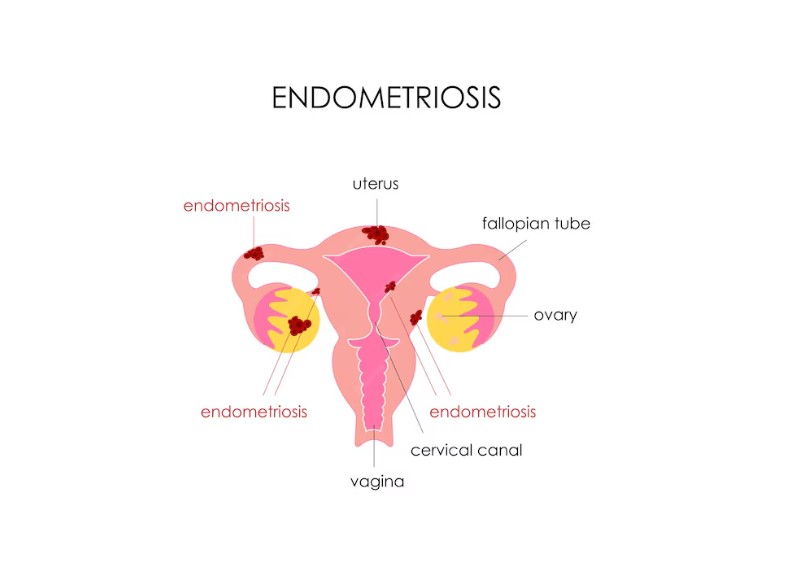
07 Aug Endometriosis: Symptoms, Diagnosis, and Treatment Options
Endometriosis is a common yet frequently misunderstood condition impacting women’s reproductive health. This chronic disorder occurs when tissue resembling the uterine lining, known as endometrium, grows outside the uterus, often affecting the ovaries, fallopian tubes, and the pelvic lining. Endometriosis can lead to a variety of symptoms, ranging from mild discomfort to severe pain, and may also affect fertility.
Symptoms of Endometriosis
Symptoms associated with endometriosis can differ significantly among individuals, but some of the most common include:
- Chronic Pelvic Pain: Persistent pain in the pelvic region.
- Dysmenorrhea: Painful menstrual periods that can be debilitating.
- Dyspareunia: Discomfort during intercourse.
- Dyschezia: Pain during bowel movements.
- Infertility: Difficulty conceiving can be a major concern for many.
Additionally, gastrointestinal issues such as diarrhea, constipation, or bloating may occur, particularly during menstruation.
Diagnosis
Diagnosing endometriosis can be complex due to its wide-ranging symptoms and the lack of a specific diagnostic test. Healthcare professionals typically start with a comprehensive medical history and physical examination. Imaging tests like ultrasound or magnetic resonance imaging (MRI) are often utilized to gather more information. In some instances, a minimally invasive procedure known as laparoscopy may be needed to visualize and confirm the presence of endometrial tissue outside the uterus.
Treatment Options
The primary goal of treating endometriosis is to manage symptoms, enhance quality of life, and preserve fertility. Depending on symptom severity and individual reproductive aspirations, various treatment options are available:
- Medications: Pain relief is often achieved through nonsteroidal anti-inflammatory drugs (NSAIDs). Hormonal treatments, including birth control pills, progestins, or gonadotropin-releasing hormone (GnRH) agonists, can help suppress estrogen levels and reduce endometrial tissue growth.
- Surgery: For individuals experiencing severe symptoms or fertility challenges, surgical options such as laparoscopic or robotic excision or ablation of endometrial implants may be recommended. If fertility is a concern, assisted reproductive technologies (ART), including in vitro fertilization (IVF), might be considered.
Conclusion
Endometriosis is a multifaceted condition that requires a comprehensive management strategy. By increasing awareness about its symptoms, diagnostic methods, and treatment options, individuals with endometriosis can access timely and effective care to enhance their quality of life and reproductive health. If you suspect you may have endometriosis or are facing related symptoms, consulting a healthcare professional for an accurate evaluation and appropriate management is crucial. For specialized care, consider reaching out to Dr. Usha M. Kumar, Endometriosis Specialist in Delhi.




Sorry, the comment form is closed at this time.